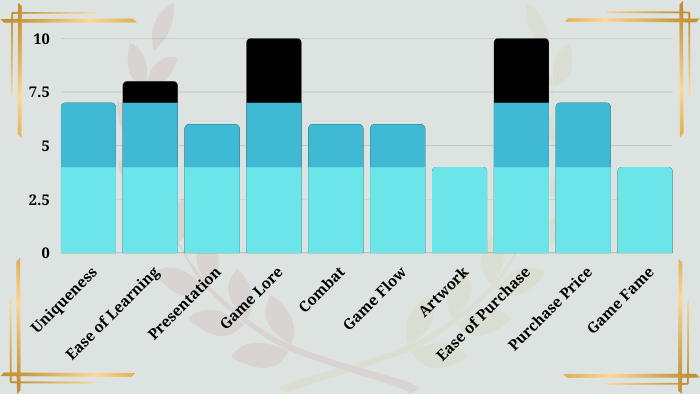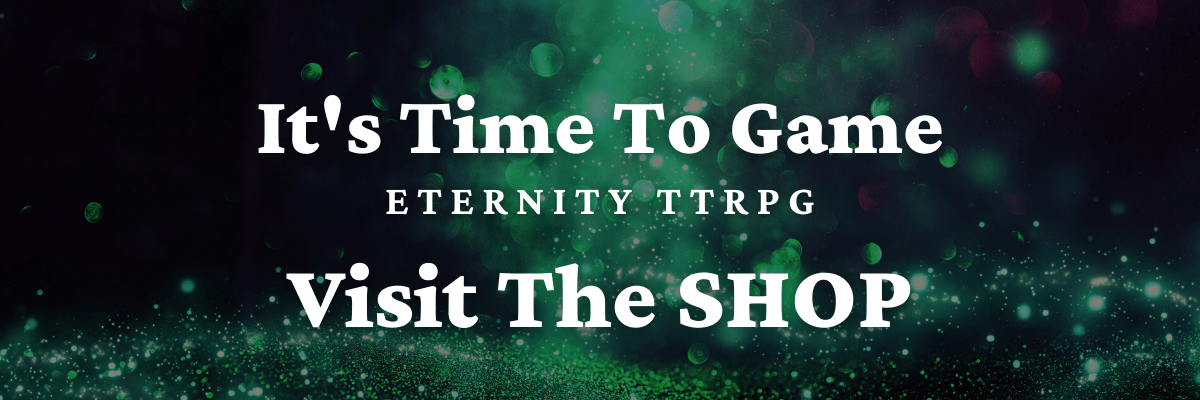Home > TTRPG Reviews
Legend of the Five Rings RPG
This Legend of the Five Rings RPG review is part of my “Best Tabletop RPGs of All Time” article. If you want to check out more TTRPGs and see how other top-tier tabletop RPGs are ranked, visit that page.
My Review – 68 / 100

Legend of the Five Rings is another one of the lesser-known TTRPGs on my top tabletop RPGs of all time list, though it’s been around for a long time. If you aren’t regularly involved in gaming conventions, you might not have ever heard of the game before.
Nowadays, the Legend of the Five Rings card game is much more well-known and popular than the tabletop game. But, of course, we’ll be discussing the TTRPG.
Keep in mind while reading this review that though Legend of the Five Ring RPG does “only” have a score of 68/100, that’s in relation to the absolute best TTRPGs of all time – as in, it only has that score when compared to games like Dungeons and Dragons. Likewise, my review of it may seem harsh at times, but again, that’s only in comparison to the absolute best games.
Bottom line is that Legend of the Five Rings RPG is a great tabletop game, and because of its focus on roleplaying a samurai or someone in that era and region, could very well become one of your new favorite games.
Legend of the Five Rings RPG Uniqueness: (7/10)
There are a number of unique elements in the core mechanics of Legend of the Five Rings RPG. Some of these unique elements are quite cool and add to the game. Others are not so good and definitely distract from the game’s story.
First off, I’m not a big fan of rounding dice/ numbers as a core mechanic, which unfortunately, Legend of the Five Rings RPG features. There isn’t necessarily a ton of that kind of thing, but it is present in key scenarios. Not good.
This game also has unique dice symbols on d6 and d12 that represent special circumstances that come up when you roll them. To play the game, you must either memorize these symbols and what they mean, or else reference the rulebook. This is probably no big deal if you play Five Rings a lot, but will slow you down, otherwise.
One thing I do really like is that for skill checks, each resolution is given an element (as in fire, earth, water, wind, etc.) by the game master, which corresponds with what a player’s trying to accomplish. The use of these elements in the core mechanics certainly fits the game’s lore and overall feel.
I also enjoy the unique approach Legend of the Five Rings takes with character advancement. Instead of simply getting more stats when your character levels up, you get to choose what you want to improve, from stats, to skills, to sword techniques, and more. This game does give you a lot of customization options for character development, over time.
Ease of Learning Legend of the Five Rings: (8/10)
When it comes to characters, there are low-number ranks to character attributes, which keeps things simple. Skills are broken down into “elements” (wind, water, earth, etc.) which also fits the game, thematically.
When building a character, you choose a clan (which gives you skills, stats, and “glory”), and a school (which provides your starting techniques). Unfortunately, to grasp the concepts of your character’s clan, school, and overall stats, you need to really do some digging into this game’s character building pages. And by “some” digging, I really mean “quite a bit” of digging.
Making a basic character isn’t super hard in Legend of the Five Rings RPG, but advancing a character is complex since every level up allows you to improve whatever you want.
Legend of the Five Rings RPG Presentation: (6/10)
I like the samurai/ Asian culture vibe present in Legend of the Five Rings RPG. It’s self-described as a “game of samurai drama,” where “characters are torn between their personal desires and their sworn duties, and must often contend with cunning court intrigues, deadly armed conflicts, and dangerous supernatural creatures.” It’s an interesting setup.
When it comes to presentation, the overall book layout is satisfactory. I did find it odd though that there aren’t clearly marked starts to chapters. As in, font, size, and coloring aren’t very unique when compared to the rest of the game’s text. Speaking of the font, I do think the choice for the main body of text for the game adds to the overall style of the book.
One thing I’ll also get into more later is that there’s virtually no art in the PDF rulebook, which of course, does lower the overall presentation score.
Legend of the Five Rings Lore: (10/10)
Everything about the game adds to the game’s lore. There isn’t a single character-building piece that isn’t filled with lore. From choosing your clan, to choosing your school, to choosing your character’s attributes, every part of it is rich with ideas for building entire RPG campaigns.
If you enjoy the idea of roleplaying a samurai in a Far East culture, you will love the lore of this game.
Combat in Legend of the Five Rings RPG: (6/10)
When getting ready to write this review, I expected to experience quite a bit of high-drama combat in Legend of the Five Rings RPG. Amazingly, I was disappointed.
Basically, there just isn’t anything in Legend of the Five Rings that wows me when it comes to combat. Instead, combat is very basic – something you might find in just about any other tabletop RPG out there.
There are some basic maneuvers available to players, but really combat is determined by your character’s attributes, skills, and a few techniques. Surprisingly, there’s nothing about combat in the game that deeply engaged me, or made me want to fight other samurai in dramatic duels to the death to maintain my honor.
Five Rings is more of a storytelling game, so it’s ok – in a sense – that combat isn’t a major focus. But let’s get real. This is a game about samurai. I feel jipped that combat isn’t a major focus. Why isn’t there a massive list of sword techniques, combat stances, and cool “stuff” for me to do?
One thing I do like about combat (now that I’ve told you how boring it is), is that battles are very fast and very deadly. I do like the realism. Five Rings also rules for mass combat, which is a plus.
Game “Flow”: (6/10)
Caution: this is one of the worst parts of Legend of the Five Rings RPG. If you find that this section doesn’t bother you it may be a good sign that this game might just be a very good fit for you.
Ok, there are a ton of steps to skill check resolutions (6 in total) in Legend of the Five Rings RPG. Additionally, each step has its own extra intricacy (sometimes a little, sometimes a lot).
Skill checks also come with “strife and composure.” Strife and composure explain how well the samurai maintains their proper decorum while completing difficult tasks, and what happens if they don’t. Finally, there are opportunities for narrative flair, according to the “element” (fire, water, wind, earth) and associated attribute of the task.
Compare everything you just read to something that you might see in Dungeons and Dragons: “roll d20 plus modifiers against a DC (difficulty check), and narrate what happens based on whether or not you succeed.”
See the difference? When it comes to Legend of the Five Rings, I both like the game system and I don’t. The game’s core mechanics definitely allows players to build a story from their character’s actions, but damn is it in-depth. And it’s slow.
Basically, an entire game happens in those 6 steps that happen with every skill check. My problem is that a lot of time gets eaten up over what I would consider to be relatively non-consequential pieces of the story.
Legend of the Five Rings Artwork: (4/10)
So, I have the PDF version of Legend of the Five Rings RPG. There’s no art in the PDF. I do not have the printed version, where I know there is art.
When I’ve looked online for Legend of the Five Rings, there’s amazing art everywhere. That art is just not in the PDF, and I honestly don’t know how much art there is in the actual printed book, aside from the cover.
My guess is that a lot of the great art you can find online either comes from the Five Rings card game, or from fan art.
I’m giving Five Rings some points here because I have to assume that there is some art in the printed version of the game, but I can’t in good conscience list the score among the best since the PDF really fell short in this category. In my opinion, every representation of a game that’s listed among the world’s best, whether printed or published as PDF should give the very best foot forward, possible.
Ease of Purchase: (10/10)
It is very easy to purchase Legend of the Five Rings RPG. The game can be found on both Amazon and the Fantasy Flight Games website.
Price & How Many Books Do You Need to Play: (7/10)
To play the game, all you need is the core rulebook that’s meant for players. If you really want it – as in, if you’re certain you’re going to play an entire RPG campaign using Legend of the Five Rings – the Dungeon Master’s guide to the game isn’t too much extra.
Fame & Availability of Supplemental Material: (4/10)
I know of Legend of the Five Rings from gaming conventions and other hardcore tabletop gamers. However, I’ve only even seen Legend of the Five Rings RPG or the card game version in tabletop gaming stores maybe twice.
As I mentioned before, if you do an online search for the game, you mostly find the card game. To find the tabletop game, you have to specifically search for “legend of the five rings RPG.”
At the end of the day, though this game is pretty good, I think it’s becoming so eclipsed by both the card game version and other (better) tabletop RPGs, that it’s on the way out from most player’s gaming tables. That being said, I think you could find some gamers to try out this TTRPG, and have a great time for at least a few sessions.
Legend of the Five Rings RPG is Produced By:






